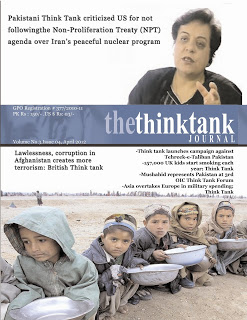In the volatile landscape of international relations, the Global South—encompassing Latin America, Africa, and parts of Asia—has long been a battleground for superpower influence. As of October 2025, a dramatic escalation in U.S. military activity in South America is fueling debates: Is tension truly mounting in this region, or is it a calculated show of force? The recent deployment of the USS Gerald R. Ford, the U.S. Navy’s most advanced aircraft carrier, to the waters off South America marks a pivotal moment. This move, announced by the Pentagon on October 24, 2025, involves the carrier strike group—including five destroyers and fighter jets—bolstering an already robust U.S. presence of around 10,000 troops in the Caribbean since August. With Venezuela at the epicenter, these actions raise urgent questions about underlying motives, perceived threats, potential beneficiaries, and ripple effects on global powers like China.
What Could Be the Reasons?
The official narrative from U.S. defense officials centers on countering drug trafficking and “illicit actors” that undermine regional stability and U.S. security. Since early September 2025, the U.S. military has conducted at least 10 strikes on suspected drug-running vessels in international waters near Venezuela, resulting in over 43 deaths. These operations target groups like the Tren de Aragua gang, designated a foreign terrorist organization by the Trump administration, which is accused of fueling violence and narcotics flows into the U.S.
However, deeper analysis reveals multifaceted drivers beyond narcotics interdiction:
- Regime Change Speculation in Venezuela: The buildup coincides with heightened rhetoric against Venezuelan President Nicolás Maduro, who faces U.S. narcoterrorism charges. Recent U.S. actions, including hypersonic bomber flyovers and covert CIA operations authorized in mid-October, suggest a broader strategy to pressure or oust Maduro. Maduro has responded with nationwide coastal defense drills covering 2,000 kilometers, framing the U.S. moves as preparation for invasion.
- Power Projection and Deterrence: Analysts describe the deployment as a “major escalation” in a region seeing the largest U.S. naval presence in decades, aimed at signaling dominance to non-aligned nations. This includes deterring alliances between Latin American states and rivals like China or Russia.
- Domestic Political Leverage: With U.S. midterm elections looming, the administration ties these efforts to a “war on narco-terrorism,” echoing post-9/11 strategies to justify unilateral actions without congressional approval.
In essence, while drugs provide the pretext, the warship’s arrival underscores a blend of security, geopolitical, and political imperatives.
Is the US Really Threatened by South American Countries?
Direct military threats from South American nations to the U.S. mainland remain negligible in 2025. No country in the region possesses the capability or intent for large-scale aggression against U.S. interests. Venezuela’s military, hampered by economic sanctions and internal strife, focuses on defensive postures rather than offensive projections.
The real peril, per U.S. assessments, stems from transnational criminal networks rather than state actors. Drug cartels, particularly those operating from Venezuela and Colombia, are portrayed as “unlawful combatants” in an “armed conflict” with the U.S. These groups reportedly smuggle billions in narcotics annually, exacerbating U.S. opioid crises and funding insurgencies. Strikes this week alone targeted three vessels, two outside the Caribbean, killing six and highlighting the operations’ expanding scope.
Critics, including bipartisan lawmakers, question the threat’s scale. Democrats argue the strikes breach international law and risk escalation without clear evidence of imminent danger. Republicans, however, hail it as overdue action against “narco-terrorists” akin to Al-Qaeda. Ultimately, the U.S. faces asymmetric threats from crime syndicates, not conventional warfare, but the rhetoric amplifies perceptions of vulnerability to justify the buildup.
Who Will Benefit from the Tension?
Escalating tensions from the USS Gerald R. Ford’s deployment create winners and losers across the board. Here’s a breakdown:
| Stakeholder | Potential Benefits | Key Considerations |
|---|---|---|
| U.S. Defense Industry | Increased contracts for carrier operations, munitions, and surveillance tech; the strike group alone sustains thousands of jobs. | Short-term economic boost, but long-term costs from prolonged engagements. |
| U.S.-Aligned Nations (e.g., Colombia, Ecuador) | Enhanced security aid and intelligence sharing against cartels; strengthens anti-Maduro coalitions. | Risk of domestic backlash if seen as U.S. proxies. |
| Venezuelan Opposition | Pressure on Maduro could accelerate regime change, opening doors for resource access like oil reserves. | Humanitarian fallout from intensified conflict. |
| Global Rivals (China, Russia) | Alienates Latin American states from U.S. influence, driving them toward alternative partnerships. | Opportunities to fill economic voids left by sanctions. |
While the U.S. gains tactical leverage, the tensions primarily empower external actors exploiting the divide.
Will the US Move Further Strengthen China in the South?
Absolutely—U.S. militarization risks accelerating China’s foothold in Latin America, a region where Beijing’s influence has surged 30% in investments since 2020. China now controls key ports, including a megaport in Peru, and has extended over $150 billion in loans for infrastructure under the Belt and Road Initiative.
The warship deployment exacerbates anti-U.S. sentiment, pushing nations like Brazil and Argentina toward Beijing for trade and tech deals. In September 2025, China hosted a security forum in the region, contrasting U.S. “gunboat diplomacy” with economic incentives. Analysts warn this could enable Chinese military access via dual-use projects, mirroring South China Sea dynamics. As U.S. actions alienate partners, China’s “silent siege” strategy—focusing on ports and resources—positions it as a stabilizing alternative, potentially reshaping Global South alliances by 2030.
A Powder Keg in the Global South
Yes, tensions are undeniably increasing in the Global South, with the U.S. aircraft carrier deployment symbolizing a shift from diplomacy to deterrence. Rooted in drug wars but laced with regime ambitions, these moves heighten risks of miscalculation, benefiting opportunistic powers like China while straining U.S. credibility. For stakeholders in Latin America, the stakes are existential: Will this spark conflict or catalyze multilateral solutions? Monitoring APEC 2025 summits could offer clues, as trade frictions with China loom large.



